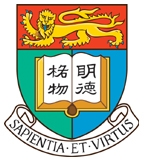Learning
Know thy neighbour: Tourism, heritage and development in Pokfulam
Do you know your neighbours? It’s become increasingly common (especially in densely populated cities like Hong Kong) for us to avoid contact with those who live next door to us. The same often also applies to the places that we work or study, as I discovered when I set about exploring the community in the Pokfulam area immediately surrounding our campus.
Last semester, I carried out an experiential learning project within our undergraduate course ‘A cultural study of tourisms and tourists’, through the generous support from Gallant Ho Experiential Learning Centre. In partnership with Benjamin Sin from the Caritas Pokfulam Community Development Project, I began to learn about the history and culture of the area, realising that it represented a perfect site to examine the relationship between tourism, heritage preservation and urban development.

Pokfulam village
Pokfulam is situated on the west of Hong Kong Island. It is primarily a residential district, but also includes monuments, a country park, relics of dairy farming facilities, one of Hong Kong’s oldest surviving villages, the city’s first reservoir, and of course, HKU. However the area is also in a state of flux. In 2014, the government partially lifted the Pok Fu Lam Moratorium, lessening restrictions on land sale and (re)development projects. Such changes raise important sociological questions. How might urban development impact on the area’s architectural heritage and it’s residents everyday lives? What role might heritage tourism play in the preservation of cultural heritage? Would something like a heritage tour at Pokfulam help deepen tourists’ understanding of the complexity of Hong Kong history?
To explore these issues, our students engaged in critical discussion on the role of heritage tourism within heritage preservation and urban development at Pokfulam. They worked together in groups to design heritage tours focused on a number of specific sites and themes:
- Pokfulam village: The oldest existing village at Hong Kong Island
- Old Dairy Farm staff quarter: Agriculture in Hong Kong: its history and future
- Béthanie and University Hall: Introducing modern ideas to Hong Kong
- Chi Fu Fa Yuen and Wah Fu Estate: Tracing urban development of Hong Kong
- Pokfulam Reservoir and Pokfulam Country Park: Nature preservation in Hong Kong
Students were given chances to join and evaluate heritage tours, attend professional training workshops, as well as design heritage tours on their own. On the last week of teaching, students organised two free guided tours, which were open to the general public, allowing them to put their plan into practice. I found the experiential elements of this course greatly facilitated the teaching and learning process by enriching our discussions of the debates around tourism studies through real-life examples. For instance, while the sociologist John Urry argued that “seeing” is the most important aspect of tourist experience, our students questioned whether, when designing their tours, it was appropriate to focus on visual elements only?

HKU students, faculty and public on heritage tour
This project also provided valuable opportunity for students to apply academic knowledge to real life situations, as well as to connect theory to practice, and community partners with students. After submitting all assignments, students have worked with several organisations to publish a guidebook and website on heritage tours at Pokfulam. The activities have also given rise to further projects, one student was so inspired by the experience that they volunteered to organise a heritage tour in their own home village.
I really enjoyed the experience of exploring both the history and the future of Pokfulam in collaboration with our community partners and students. But the best impacts came from the students themselves One student commented that, “Despite being a HKU student for four years, I barely know the history of this neighbourhood”. Hopefully, we can now say that thanks to this course, we know our neighbours a little better.
 The University of Hong Kong
The University of Hong Kong